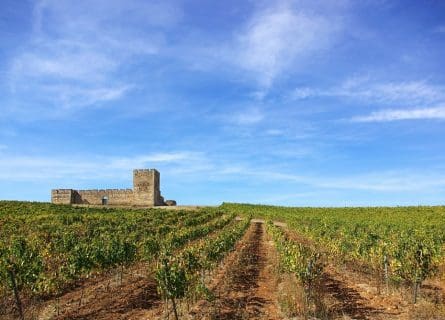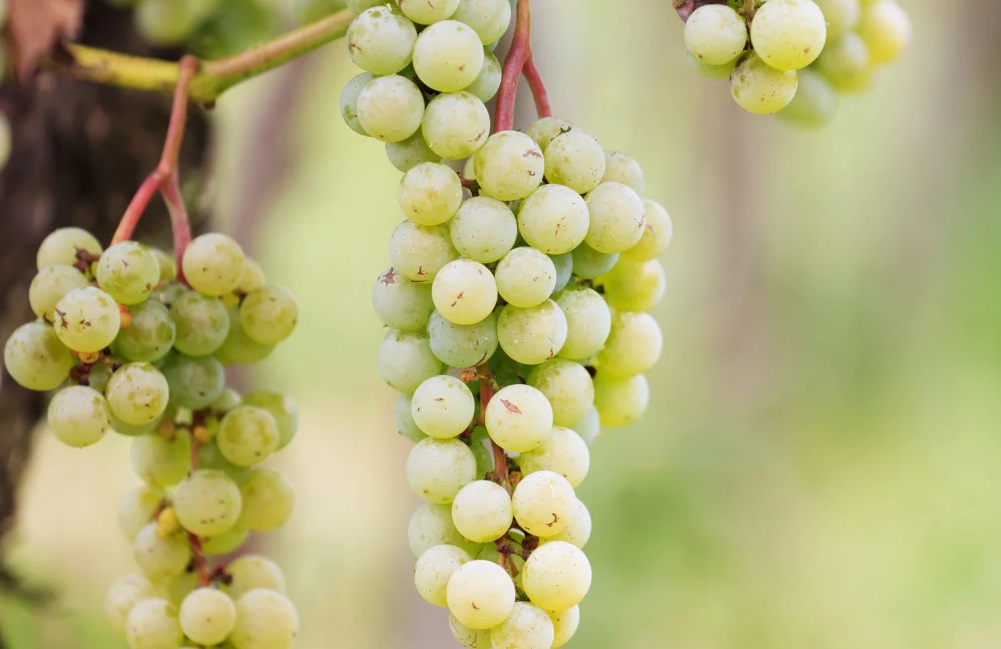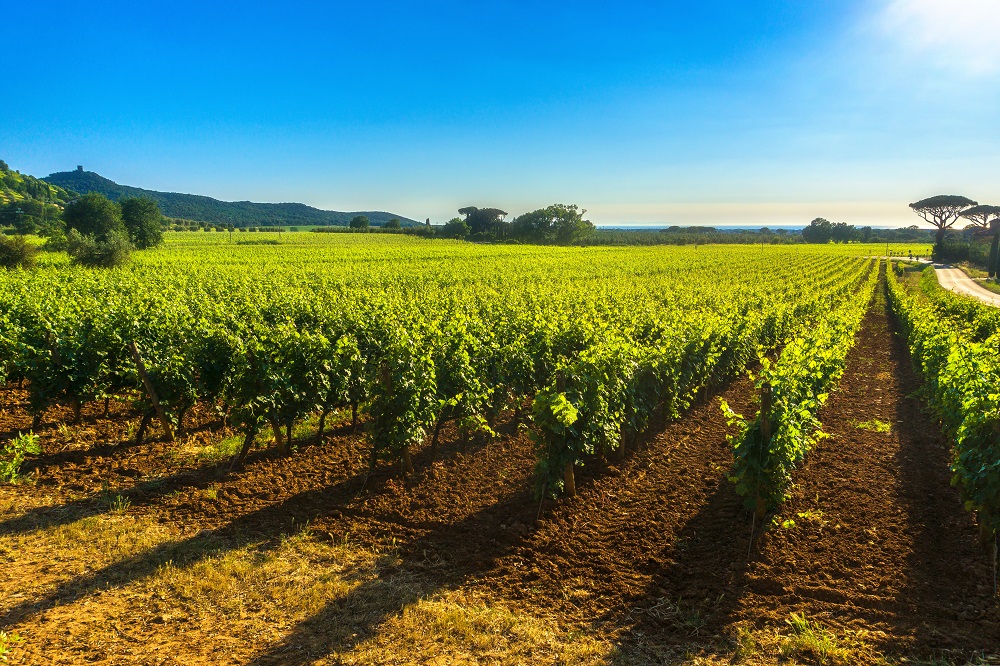
Antão Vaz Grape Variety: Surprise, Surprise
February 8, 2023
Antão Vaz: Popular Portuguese white wine grape, grown in Alentejo. Known for its fresh acidity, ideal for casual and fine dining.
By: James lawrence / Last updated: February 3, 2025
Estimated reading time: 9 minutes
Inzolia is a grape with two distinct identities. One of them stretches back over a century – Inzolia is one of the key white varieties used to make Sicilian Marsala wine. This fortified wine, made on the island’s west coast, once enjoyed a reputation equal to the illustrious First Growth estates of` Pauillac; contemporary palates have, sadly, shown less regard for the style. Nonetheless, the flame is alive, just in the ancient cellars of De Bartolo and Nino Barraco, where Inzolia adds weight and structure to the final blend. Moreover, the best examples are aged in barrel for over ten years, creating a dark, rich, and oxidative expression of Inzolia with no contemporary equivalent.

Guide to Italian White Wine: Read more
The other is a wine for our modern age. A growing number of producers in Sicily are fashioning exceptional dry whites from the variety – a Sicilian response to the Kiwi Sauvignon Blanc craze. Winemakers in coastal Tuscany have also shown a talent for mastering the grape, commonly known as Ansonica. However, Inzolia cannot be taken for granted: it has a predilection toward overripeness in warm vintages, running the risk of low acid and high pH wines. For that reason, only the most experienced winemakers tend to succeed with the grape. Its future lies in their patience and ambition.
Like many European grape varieties, Inzolia can trace its ancestry to the ancient world. Historians strongly believe it was introduced to the island of Sicily in the 8th Century BC after the Greeks established a series of trading colonies across the western Mediterranean. This was initially driven by the overpopulation of the Greek city-states, which encouraged the settlement of regions in North Africa, Italy, France, and Spain. Over time, many agricultural commodities and practices were introduced to Italy, including wine growing.
There is also some scientific evidence that gives credence to the narrative of Greek propagation: genetic analysis has proven that Inzolia is linked to two Greek grape varieties. Rhoditis and Sideritis, respectively – both originate on the island of Rhodes. At some point in the past, Inzolia is presumed to have traveled to the vineyards of western Tuscany. However, many Greek settlers fled to the islands after the Romans conquered the Italian Peninsula and Sicily in 210 BC.
The Romans, meanwhile, held together a Western empire for many centuries, building on many of the advances and cultural norms of the previous inhabitants. This, of course, included viticulture and winemaking. Like the Greeks, the Roman upper classes enjoyed their wines laced with sugar and herbs, made in a style that would horrify modern-day oenophiles. This tradition of adulteration continued long after the Western Empire collapsed in 476 AD – the popularity of dry wines is a relatively new phenomenon. For example, most Champagne was produced as a sweet wine in the 19th century. Only after the Second World War did drier cuvées become fashionable with Europe’s moneyed classes.
A succession of European civilizations, including the Arabs, Vandals, and Normans, occupied the political gulf left by the Romans’ departure. After conquering England in 1066, the Normans founded the County of Sicily in 1071 – this evolved into the Kingdom of Sicily in the 12th century. By this point, a formerly obscure civilization from northern Europe had vast territories, including southern Italy, England, and Sicily. However, the Normans lost Sicily during a bloody uprising in 1282, while the island became part of the Aragonese Empire that same year. This broad political arrangement swallowed up the Balearic islands and Catalunya, Provence, Corsica, and Sardinia. Finally, in 1442, southern Italy became part of the kingdom of Aragon. It would take another 520 years before Sicily was under the direct administrative control of a unified Italian state.
In the 1700s, British entrepreneur John Woodhouse laid the foundations for the creation of Marsala. On the west coast of Sicily, growers had a tradition of blending different varieties – including Inzolia – and maturing them in barrels for years. The resulting wine style was darkly colored and rich in flavor – the benefits of slow oxidation in wood. After experiencing the wine at source, Woodhouse shipped a few containers back to England. But, until this point, the Sicilians had never fortified their wines. Yet Woodhouse believed that fortification would improve Marsala and make it easier to transport. After some resistance, this became standard practice in Sicily.
However, its popularity declined significantly in the 20th century as consumers sought bone-dry wines and ‘clean’ flavors. Meanwhile, the flood of EU subsidies encouraged many producers to churn out gallons of high-yield plonk, damaging the island’s reputation as a source of premium wine. Thankfully, the reality of a globalized market – and 21st-century economics – forced growers to switch allegiances and prioritize quality over quantity. Inzolia has played an important role in this cultural shift, as the grape is very malleable; both single-varietal and blended Inzolia wines have real merit.
Yet it is not particularly easy to grow: Inzolia is prone to delivering an overly generous crop unless its vigor is controlled. Therefore, leaf pulling and green harvesting are both advisable, in addition to strict berry selection after the fruit is picked. But the real challenge is maintaining a delicate balance between phenolic ripeness and acidity; Inzolia can produce flabby wine if sugar levels climb too rapidly. Making a well-informed judgment about the harvest date is crucial here.
Sicilian whites often show precision and surprising freshness. Indeed, a Mediterranean climate is hardly conducive to crisp acidity and crystalline flavors. Yet producers across the island achieve this goal via a combination of judicious site selection, elevation, and sophisticated winemaking. Inzolia is no exception to that rule. There is also a strong culture of blending in Sicily; relatively little mono-varietal Inzolia is produced, albeit the grape can stand on its own merits. But, for the most part, it is blended with either Carricante and/or Grillo. In addition, most growers aim for aromatic finesse – very few cuvées are vinified or matured in wood.
On the contrary, Sicily’s rejuvenated white wine industry is heavily reliant on protective winemaking—and temperature control—to make a product that is both relevant and easy to enjoy. As a rule, hand-harvested grapes are sorted and chilled on arrival before they are transferred to the press. This is often carried out in a pneumatic cylindrical press, which enables a very gentle and soft pressing, releasing pure must.
After approximately 24 hours, the juice will be run off and moved to a holding tank. A cool fermentation in stainless steel tank will then take place. There are many advantages to using stainless steel, not least the sterility of the vessel and the ability to precisely control the temperature at all times. This will produce a benchmark aromatic and unoaked style of white. However, many winemakers in Sicily like to age their wines on the fine lees for several months – this French technique has become almost ubiquitous in the world’s cellars. But it is understandable: there are many advantages to be gained from contact with this yeasty sediment, not least improved flavor, texture, and mouthfeel.
Of course, there are iconoclasts and trailblazers in every region. Thus, certain growers reject this paradigm, as they prefer to expose their wines to prolonged skin contact and occasionally maturation in wood – using amphorae is also in vogue. The results will not please everyone: such wines lack the zip and zest of unoaked Inzolia. They are, however, often very complex and individual wines.
There are two principal sources of high-quality Inzolia wines today. The most renowned is Sicily; the island’s mosaic of mesoclimates and soils delivers a pleasing stylistic variance, ranging from full-bodied whites to light and floral expressions. However, a unifying quality defines all the best labels and wines – Sicily’s leading terroirs benefit from cooling influences and a saline quality that comes naturally to local viticulture. Moreover, Sicily’s native grapes create the most food-friendly white wines on the planet. Shellfish, white meat, risotto, cream, and tomato-based pasta sauces work brilliantly alongside Inzolia.
Yet, it would be a mistake to limit yourself to Sicilian interpretations of the style. So allow us to present the vast expanse of the Maremma Toscana, a piece of land that stretches from Livorno to as far south as the Argentario Peninsula. Known locally as Ansonica, the grape yields beautifully fragrant and fruity white wine in the hills of Maremma – the bouquet is often very striking, with its distinct smell of fennel and watermelon. It could be said that Ansonica is one of the region’s biggest success stories. For this, we should pay due homage to the terroir and a progressive winegrowing culture that increasingly defines life here.

Nevertheless, the Maremma has long been celebrated for its spectacular topography. Garrigue-covered hills, pine forests, and unspoiled beaches often sit cheek by jowl. There is also significant variance in site elevation and mesoclimate; vineyards close to the Tyrrhenian Sea benefit from marine air, which helps to cool the vine canopy during the summer. So, too, are the region’s soils very heterogeneous, encompassing volcanic and calcareous outcrops, loam, sandstone, and gravel.
But exceptional terroir is only part of the equation. The Maremma DOC appellation, created in 2011, encourages innovation. For example, Inzolia may be blended with several international varieties and not simply indigenous grapes. As a relatively young zone, the Maremma benefits from a liberal set of guidelines designed to protect the quality and allow experimentation from winemakers. This year, we’ve tasted Ansonica blended with Chardonnay, Sauvignon Blanc, and Vermentino. This would be unthinkable in the more traditional corners of Italy. It may be invidious to say so, but few New World vineyards contain as much novelty as the Maremma—a remarkable achievement in Europe’s oldest winemaking country.
If you would like us to customize an exclusive luxury tour, contact us and let us know your travel plans. We offer luxury food and wine tours for private groups of a minimum two guests. In addition, all of our private, chauffeured tours are available year-round upon request.

